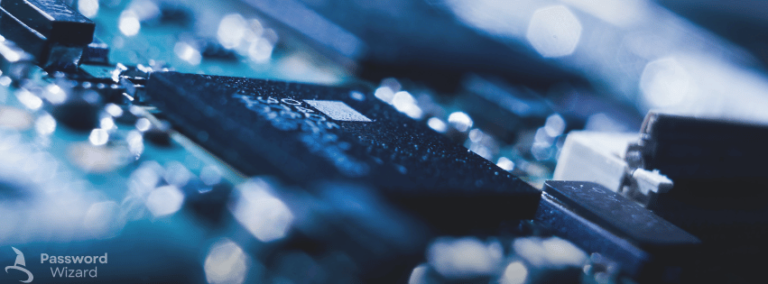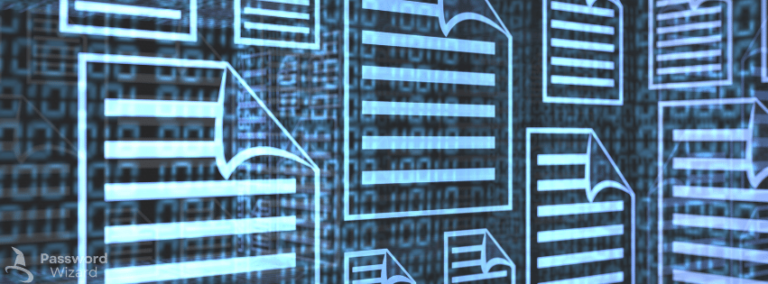In today’s interconnected digital landscape, maintaining file integrity is paramount to ensuring data security and reliability. Whether you’re managing sensitive business records, personal documents, or system-critical files, verifying that your files remain unaltered is essential for protecting against unauthorized tampering, accidental corruption, or malicious attacks. One of the most effective methods to achieve this is by generating MD5 or SHA1 checksums and periodically comparing them to detect any discrepancies. This article explores the concept of file integrity , how checksum algorithms like MD5 and SHA1 work, and why regular verification is a cornerstone of robust cybersecurity practices.
What Is File Integrity?
File integrity refers to the state of a file remaining unchanged from its original version. In other words, it ensures that no modifications—whether intentional or accidental—have occurred. Maintaining file integrity is critical because even minor alterations can lead to significant issues, such as corrupted software, compromised systems, or exposure of confidential information.
Consider downloading an application installer from the internet. If the file has been tampered with during transmission, executing it could introduce malware into your system. Similarly, in enterprise environments, altered configuration files might cause operational failures or create vulnerabilities that cybercriminals can exploit. To address these risks, tools like MD5 and SHA1 checksums are used to verify file integrity and ensure that files remain trustworthy.
Understanding Checksum Algorithms: MD5 and SHA1
Checksums are unique identifiers generated based on the contents of a file. These cryptographic hash functions produce fixed-length strings of characters that serve as a „digital fingerprint” for each file. Two widely used checksum algorithms are MD5 (Message Digest Algorithm 5) and SHA1 (Secure Hash Algorithm 1).
MD5 Checksums
MD5 generates a 128-bit hash value, typically represented as a 32-character hexadecimal string. For example, a file named example.txt might have an MD5 checksum like d41d8cd98f00b204e9800998ecf8427e. While MD5 was once a popular choice for verifying file integrity , it is now considered less secure due to vulnerabilities that allow attackers to create hash collisions—different inputs producing the same output. Despite this limitation, MD5 remains useful for non-critical applications where speed and simplicity are prioritized over security.
SHA1 Checksums
SHA1, on the other hand, produces a 160-bit hash value, represented as a 40-character hexadecimal string. For instance, the same example.txt file might yield an SHA1 checksum like da39a3ee5e6b4b0d3255bfef95601890afd80709. SHA1 offers stronger security compared to MD5 and was designed to address some of its predecessor’s weaknesses. However, advancements in computing power have also rendered SHA1 vulnerable to collision attacks, prompting organizations to adopt more robust alternatives like SHA256 or SHA3 for high-security needs.
Regardless of the algorithm used, the fundamental principle remains consistent: if two files produce identical checksums, they are likely identical. Conversely, any change in the file—even a single byte—will result in a completely different checksum, signaling potential tampering or corruption.
Why Periodic File Integrity Verification Matters
Periodically verifying file integrity is not just a best practice; it is a necessity for safeguarding your data. Here are several reasons why regular checksum comparisons are crucial:
Detecting Unauthorized Modifications: Regularly comparing checksums helps identify unauthorized changes to files. For example, if a hacker alters a system file to install backdoors or inject malware, the checksum will differ from the expected value, alerting administrators to the breach.
Preventing Data Corruption: Files can become corrupted due to various factors, including hardware failures, software bugs, or network interruptions. By routinely checking their integrity, you can catch corruption early and restore affected files before they cause further damage.
Ensuring Compliance: Many industries require strict adherence to regulations governing data protection and cybersecurity. Verifying file integrity using checksums demonstrates compliance with these standards, reducing legal and financial risks.
Building Trust: When sharing files online, providing checksums allows recipients to confirm that the files they received match the originals. This builds trust between parties and ensures transparency.
Steps to Verify File Integrity Using MD5/SHA1
Verifying file integrity involves three primary steps: generating a checksum for the original file, storing it securely, and periodically comparing it against new checksums. Here’s a step-by-step guide:
Step 1: Generate the Original Checksum
To generate a checksum, you’ll need access to tools that support MD5 or SHA1 hashing. Most operating systems include built-in utilities for this purpose:
- Windows: Use PowerShell commands like
Get-FileHash -Algorithm MD5 <FilePath>orGet-FileHash -Algorithm SHA1 <FilePath>. - macOS/Linux: Use terminal commands like
md5sum <FilePath>orsha1sum <FilePath>.
Once executed, these commands will output the checksum associated with the specified file.
Step 2: Store the Checksum Securely
After generating the checksum, store it in a secure location separate from the file itself. This prevents attackers from modifying both the file and its checksum simultaneously. Options include writing it down physically, saving it on an encrypted USB drive, or uploading it to a trusted cloud service.
Step 3: Compare Checksums Periodically
At regular intervals—or whenever you suspect tampering—generate a new checksum for the file and compare it to the stored value. If the values match, the file remains intact. If they differ, investigate the discrepancy immediately to determine whether tampering or corruption has occurred.
Best Practices for Maintaining File Integrity
While generating and comparing checksums is straightforward, implementing best practices enhances their effectiveness:
Use Stronger Algorithms When Possible: Although MD5 and SHA1 are still functional, consider upgrading to SHA256 or SHA3 for enhanced security, especially when dealing with sensitive data.
Automate the Process: Manually verifying file integrity can be time-consuming, particularly for large datasets. Automating the process using scripts or dedicated software ensures consistency and reduces human error.
Monitor Critical Files Closely: Focus your efforts on files that are mission-critical or frequently targeted by attackers, such as executables, configuration files, and databases.
Educate Users: Train employees or team members about the importance of file integrity and how to perform checks. Awareness fosters a culture of vigilance and accountability.
Combine with Other Security Measures: While checksums are powerful, they should complement—not replace—other security measures like encryption, access controls, and intrusion detection systems.
Common Challenges and Solutions
Despite their benefits, checksum-based approaches to file integrity face certain challenges:
Performance Overhead: Generating checksums for large files or numerous files can consume significant processing power. To mitigate this, schedule verifications during off-peak hours or use incremental checks that focus only on recently modified files.
False Positives: Occasionally, legitimate updates may trigger mismatched checksums. To avoid confusion, maintain clear documentation of authorized changes and update stored checksums accordingly.
Algorithm Vulnerabilities: As mentioned earlier, older algorithms like MD5 and SHA1 are prone to attacks. Transitioning to modern alternatives minimizes this risk.
The Role of File Integrity Monitoring Tools
For organizations seeking scalable solutions, file integrity monitoring (FIM) tools offer advanced capabilities beyond manual checksum generation. These tools continuously scan files, track changes, and alert administrators to suspicious activity. Popular FIM solutions include:
- Tripwire: A comprehensive platform that monitors file integrity across various environments.
- OSSEC: An open-source host-based intrusion detection system that includes file integrity monitoring features.
- Splunk: A data analytics tool that integrates FIM functionality for real-time threat detection.
By leveraging these tools, businesses can streamline file integrity management while gaining deeper insights into their overall security posture.
Conclusion
In conclusion, file integrity is a fundamental aspect of data security that cannot be overlooked. By generating MD5 or SHA1 checksums and comparing them periodically, individuals and organizations can detect tampering, prevent data corruption, and ensure compliance with regulatory requirements. While no method is foolproof, combining checksum verification with best practices and advanced tools creates a robust defense against threats.
As cyberattacks grow increasingly sophisticated, prioritizing file integrity becomes not just a recommendation but a necessity. Start implementing checksum-based verification today to protect your data and maintain peace of mind tomorrow. After all, safeguarding your files isn’t just about preserving information—it’s about preserving trust, reliability, and security in an interconnected world.
Read more:
- Free Online Password Generator Tool – Generate Strong Passwords
- Unique Passwords: The Key to Online Security
- Avoid Predictable Information in Passwords
- Two-Factor Authentication 2FA
- Secure Storage
- Browser Safety Tips: Protect Your Passwords Online
- Encrypted Connections: Safeguarding Your Online Activities
- Regular Updates: The Key to a Secure Digital Life
- Device Security : Protect devices with firewalls, antivirus software, and physical locks
- File Integrity
- Phishing Awareness
- Developer Best Practices
- Business Security



